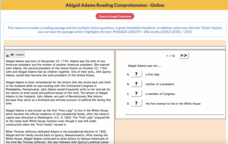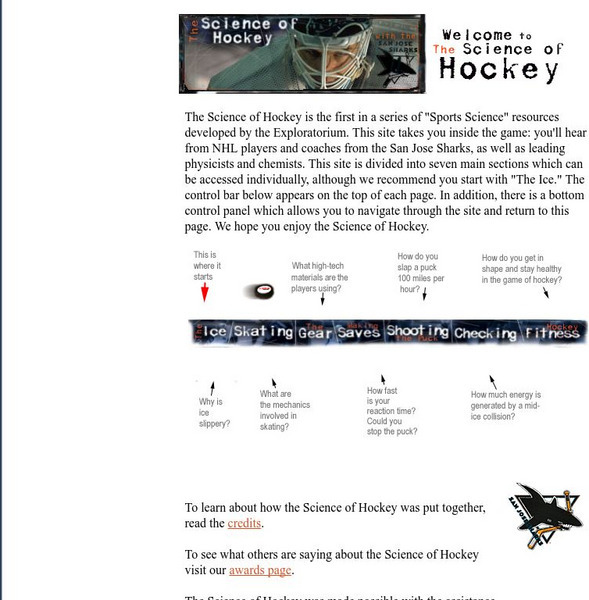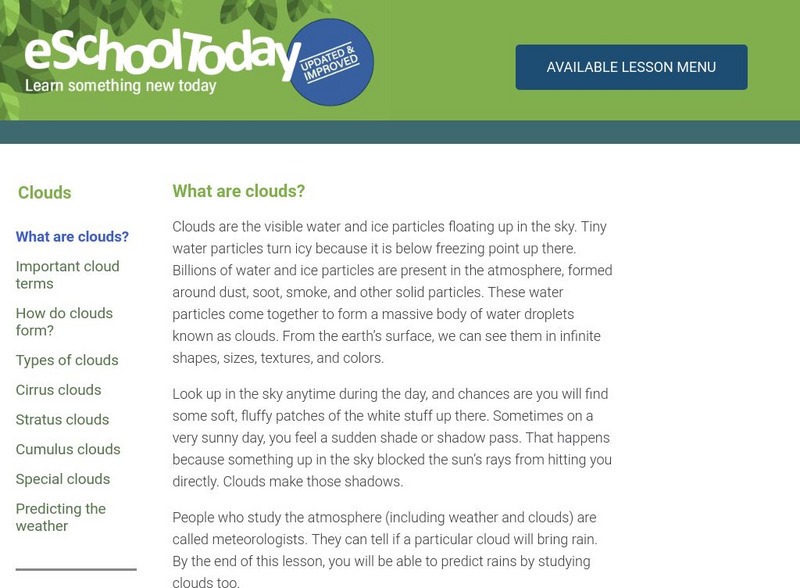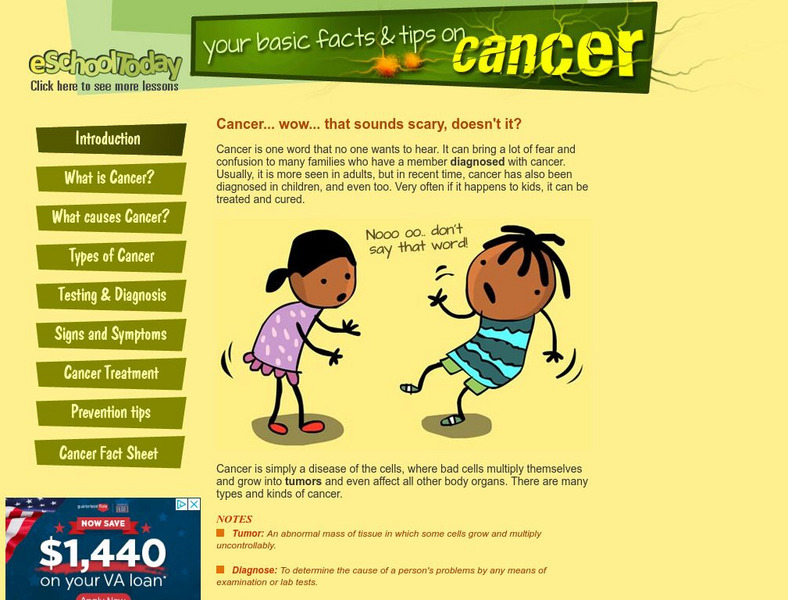Mr. Nussbaum
Alexander Graham Bell
An interactive practice challenges scholars to read an informational text then answer nine questions. The topic of the text is Alexander Graham Bell. Questions are a mix of multiple-choice and fill-in-the-blank.
Mr. Nussbaum
Abigail Adams
Ten multiple-choice questions follow a short informative reading about Abigail Adams. Feedback appears instantly and ends with a detailed report.
Concord Consortium
Concord Consortium: Stem Resources: Earthquakes Around the World
In this interactive, students manipulate a computer model that shows where earthquakes and volcanic eruptions have occurred since 1960, to make predictions, collect data and look for patterns. Includes career connection, and a question...
Concord Consortium
Concord Consortium: Stem Resources: Greenhouse Light and Temperature
An interactive tool where students can create a model of a greenhouse and use a light sensor to measure the amount of light it receives from a lamp at various times of the day. Temperature is also measured. Data is plotted on graphs,...
Library of Congress
Loc: Everyday Mysteries: What Is Gps?
Where are you and where are you going? Visit this site and learn the discovery and purpose of GPS, Global Position Systems.
Chem4kids
Chem4 Kids: Chemistry Careers
Chem4Kids! looks at careers available in the large field of chemistry. Here you can explore the career of a doctor, pharmacist or pharmacologist, university researcher, forensics expert, or hazardous materials expert.
Exploratorium
Exploratorium: The Science of Hockey
If you love hockey - or are just curious about hockey - you will really like this site. There is a lot of information about the components of hockey. You can learn what equipment is necessary, how slapshots are made, and how to skate...
Michigan State University
Michigan State University: Digital Learning Center for Microbial Ecology: Microbe Zoo: Ag Acres
A simple overview of the important roles microbes play in agriculture. You'll learn how some microbes can be hazardous to plants while others help fertilize and build soil, and kill insects.
National Endowment for the Humanities
Neh: Edsit Ement: I've Just Seen a Face Portraits Lesson Plan
This website contains a lesson plan in which students attempt to analyze different types of portraits for better understanding. It contains 6 different lessons in which students look at examples of portraits of children, important...
American Chemical Society
Inquiry in Action: Condensation
In this activity, students explore the process of condensation. After seeing water vapor condense, students will help design a test to see if cooling water vapor has an effect on the rate of condensation.
American Chemical Society
Inquiry in Action: Exploring Moisture on the Outside of Cold Cup
In this activity, students investigate how condensation causes moisture to form on the outside of a cold cup. To see if the condensed water vapor comes from the air, students use 2 cold cups, but limit the air around one of them by...
American Chemical Society
Inquiry in Action: Explore Moisture on Outside of a Cold Cup (Dry Environment)
Regardless of the time of year or region of the country students live in, they have likely experienced moisture on the outside of a cold drink or another cold surface. In this activity, students will prepare a sample of humid air since...
American Chemical Society
Inquiry in Action: Defining Density
Do heavy things always sink and light things always float? In this introductory demonstration and activity, students are introduced to the concept of density as they explore a rock and a wooden block in water.
McGraw Hill
Mc Graw Hill Education: Grade 6: Treasures: Practice Book O [Pdf]
Help sixth graders reinforce their understanding of reading skills, vocabulary acquisition, fluency, and phonics with the exercises in this 230-page workbook. This workbook is designed to supplement the stories from Grade 6 Treasures.
eSchool Today
E School Today: Elements, Compounds, Substances and Mixtures
Learn about the classification of matter based on whether the chemical composition is pure or a mixture. Understand the definitions of elements, compounds, substances, and mixtures, and what the differences are between them. Five types...
eSchool Today
E School Today: Energy
Explains different kinds of energy, covering kinetic, potential, gravitational, mechanical, sound, thermal, chemical, electrical, and radiant energy. Also looks at storage, transfer, and dissipation of energy. Includes a short...
eSchool Today
E School Today: Your Revision Notes on Clouds
Learn all about clouds, how they form, the different types, and how they can be used to predict the weather.
eSchool Today
E School Today: Your Cool Facts and Tips on Air Pollution
Looks at air pollution, its causes and impact, common pollutants, and what individuals and governments can do to combat it.
eSchool Today
E School Today: Your Cool Facts and Tips on Light Pollution
What is light pollution and why should we care about it? Learn what it is, the different types, sources of this type of pollution, the impact it has, and ways to combat it.
eSchool Today
E School Today: Your Basic Facts and Tips on Cancer
Explains how cancer develops and spreads, some causes of cancer, different types, how it is diagnosed, signs and symptoms of cancer, treatments, and tips for preventing it.
PBS
Pbs Learning Media: Nisqually Glacier at Mount Rainier
Observe the Nisqually Glacier at Mount Rainier in this video segment from NatureScene. [4:07]
PBS
Pbs Learning Media: Waterslides
Join Valerie and Margie as they devise ways to measure how fast and how "wild" two water slides are in this video from DragonflyTV. [3:12]
PBS
Pbs Learning Media: Creepy Crawlies
This interactive feature from the NOVA: "Odyssey of Life" Web site explores the often unwitting relationship we share with the billions of "creepy crawlies" that reside in our bodies and in our homes.
PBS
Pbs Learning Media: Scent of an Alewife
This video segment from NOVA: "Sea Behind the Dunes" tracks the return of spawning alewife fish from the open ocean back to the freshwater streams and ponds where they were born. [3:34]















![Mc Graw Hill Education: Grade 6: Treasures: Practice Book O [Pdf] eBook Mc Graw Hill Education: Grade 6: Treasures: Practice Book O [Pdf] eBook](https://content.lessonplanet.com/knovation/original/18021-b56f890f769d935235a837c16125b816.jpg?1661551645)






